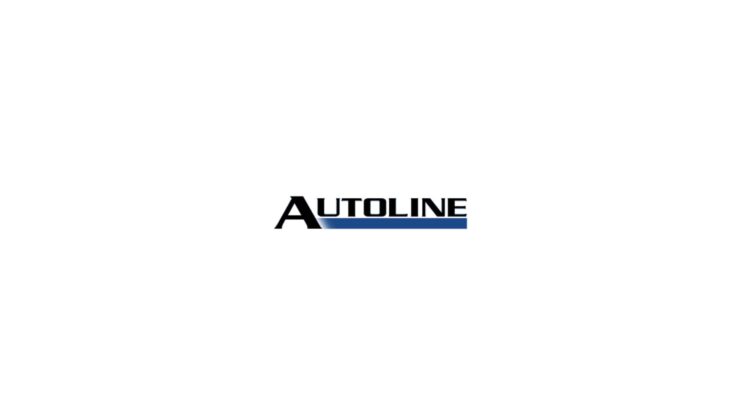
Follow us on social media:
Runtime: 7:27
0:29 Ghosn Bail Request Rejected Again
0:46 Europe Approves Tesla Model 3
1:06 Geely Reveals CUV Based on Volvo Architecture
2:19 The Many Uses of Dimmable Glass Tech.
3:41 VW Starts Sales of Performance GTI TCR
4:25 Karma Automotive Partners with Pininfarina
5:10 Aluminum Ford F-150 is Paying Off
6:03 Details of Ford & VW Alliance
Visit our sponsors to thank them for their support of Autoline Daily: Bridgestone , Dow Automotive Systems and ExxonMobil.
On today’s show… Geely shows off its first vehicle built on a Volvo platform… Tesla gets the green light to sell the Model 3 in Europe… and Ford’s decision to go all aluminum with the F-150 is paying off. All that and more coming right up on Autoline Daily.
This is Autoline Daily the voice of the automotive industry.
GHOSN BAIL REQUEST REJECTED AGAIN
We’ve got a quick update on Carlos Ghosn. Yesterday we told you he offered to wear an ankle tether if he was allowed to leave jail on bail. But his request was once again rejected by a Tokyo court, which means he will likely remain in custody until his trial begins.
EUROPE APPROVES TESLA MODEL 3
Good news for Tesla. It was just given permission to start selling the Model 3 in Europe. The company is expected to introduce the EV next month in the region. But it’s going to be a bit pricier. The cheapest version of the Model 3 will start at nearly 59,000 euros or about $67,000.
GEELY REVEALS CUV BASED ON VOLVO ARCHITECTURE
Geely, the parent company of Volvo, is showing off the first pictures of a vehicle that will be built on its compact modular architecture, which it shares with the Swedish automaker. The XC40 is currently the only Volvo built on that platform, but as you can tell the FY11, as it’s called, has a much more sporty design. It has distinct styling at the front and rear, but looking from the side you might mistake it for a BMW or Mercedes. The FY11 is powered by a 235-horsepower 2.0L turbocharged 4-cylinder engine, which can be paired with either front- or all-wheel drive. Geely has expressed interest in entering the U.S. and European markets and if it’s able to match a cost advantage with styling like this, other automakers better start to worry.
Still to come… VW introduces a new version of the Golf with more power.
THE MANY USES OF DIMMABLE GLASS
The supplier Gentex is showing how its dimmable glass technology in mirrors can play a role in other areas of the vehicle. For example, it can be used to help conceal cameras mounted on the windshield near the rear-view mirror when the car isn’t operating. This a feature that appeals to designers because it can clean up the look of the vehicle. Another example is using the technology at the top of the windshield to block light that falls between the sun visors. The company has also equipped it in a pop-up Head-Up Display, which helps minimize the sun from washing out the display screen. Lastly, Gentex showed how it can be used in the sunroof and back windows to control light. It can let up to 55% of light into the vehicle or in a darkened state, less than 1% of the light is allowed in. The supplier is working on similar technology with Boeing for its 787 Dreamliner airplane. But in automotive applications this could be ideal for an autonomous vehicle, when a rider would like more privacy. This info comes from our coverage of CES. If you want to check out those videos, just head to the Autoline on the Road section of our website, or you can find it on our YouTube channel.
VW STARTS SALES OF GOLF GTI TCR
A nearly 290-horsepower version of the Volkswagen Golf sounds pretty fun, doesn’t it? The automaker has been showing off a concept version of the GTI TCR for a while now, but it’s finally started sales of the real deal. Highlights include a front splitter, roof spoiler, rear diffuser, 7-speed DCT and 0-100 kilometers an hour in 5.6-seconds. But all that exclusive content doesn’t come cheap. The GTI TCR is priced at nearly 39,000 euro or over $44,000 in Germany. There are currently no plans to bring the car to the U.S.
KARMA PARTNERS WITH PININFARINA
Karma Automotive, which you may remember sells a rebranded version of the Fisker Karma called the Revero, is partnering with Italian design house Pininfarina. There aren’t many details about the tie-up but the companies say they’ll show off the first results of the partnership sometime in the second quarter of this year.
Ford’s decision to go with an aluminum F-150 was a profitable one. We’ll tell you why, right after this.
ALUMINUM F-150 PAYS OFF
When Ford went with an aluminum body on the F-150, Chevrolet launched TV ads making it look like the aluminum could easily tear or be dented. But the ads turned out to be a waste of time. Last year the aluminum F-150 outsold the Chevy Silverado by 258,000 trucks. Even though aluminum is more expensive than steel, Ford’s Jim Farley told financial analysts the aluminum truck is more profitable than the steel truck it replaced, and it gets an average $2,000 more in pricing than its competitors do. Chevrolet and Ram have proved that you don’t need to go all aluminum to be competitive from a weight standpoint. But Ford says that the decision to go with aluminum has proved to be a very profitable one.
DETAILS OF FORD & VW ALLIANCE
We’ve got more specifics on the collaboration between Ford and Volkswagen. The data firm LMC Automotive reports that Ford will take the lead development for a mid-size pickup that will replace the Ranger and the VW Amarok and will go into production in 2022 with global production of 380,000 trucks. Volkswagen will take lead development for the replacement of the VW Caddy and Ford Transit Connect. Global volume will be 370,000 of the small vans and they go into production in 2023. Ford will take lead development of the Ford Transit and VW Transporter and those large vans will also come out in 2023 with global volume of 630,000 large vans. That means total volume will come to 1.38 million vehicles, with 830,000 of it going to Ford and 550,000 going to Volkswagen.
But that wraps up today’s show, thanks for watching and we’ll see you again tomorrow.
Thanks to our partner for embedding Autoline Daily on its website: WardsAuto.com

John McElroy is an influential thought leader in the automotive industry. He is a journalist, lecturer, commentator and entrepreneur. He created “Autoline Daily,” the first industry webcast of industry news and analysis.





